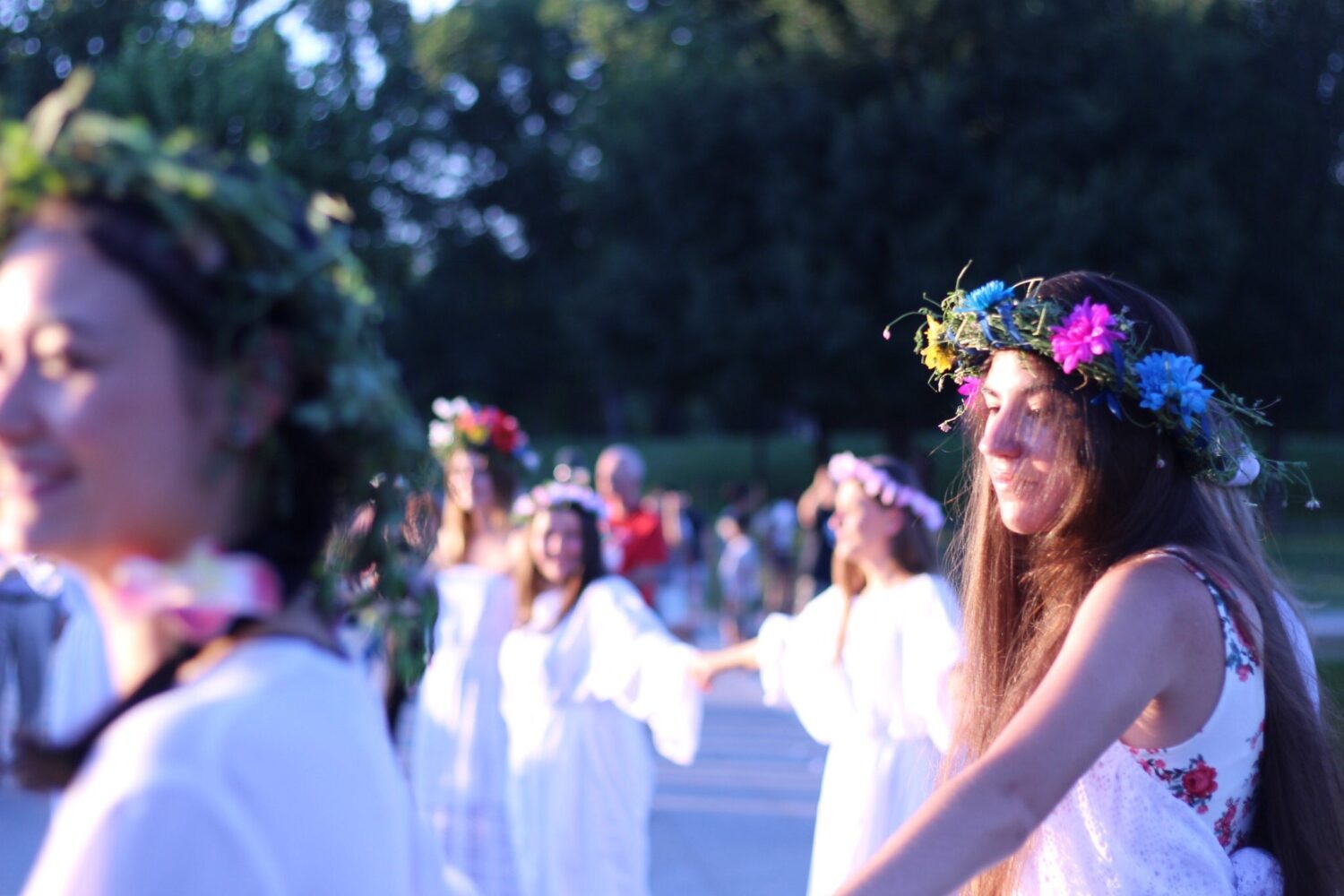Wianki (or, in English, Wreaths) is a Polish holiday event that takes its roots in the pre-Christian tradition of celebrating summer solstice as a day of fire, water, fertility, love and joy.
Wianki is celebrated each year in June and is a Midsummer festival marking the summer solstice. While it has analogues throughout Europe, in ancient Slavic culture, the holiday was one of the most important and thus it stands out particularly in Ukraine, Russia, and Poland.
Wianki is one of the few festivals that happen inside a major city. Krakow City Hall officially started supporting the celebrations in 1992. Today, folk festivities as well as rock concerts and pop-up markets all mark the day there. The festival was originally known as “Noc Kupały” or “bathing night.” After the adoption of Christianity by Poland, pagan traditions continued, but the context changed and the celebration became known as “Sobótka”, or “Noc Świętojańska” (St. John’s Night), after John the Baptizer. In Russia and Ukraine, where a similar process occured, the celebration is still known as Ivan Kupala.
The holiday is heavily associated with flower wreathes and crowns, telling fortunes, water, burning herbs, and jumping over bonfires.
Where did you go to experience the holiday? What did you see and what did you do there?
Allie Schauer (Warsaw, Summer 2019): I was between Old Town Krakow and Kazimierz during Wianki, the Polish summer solstice festival. All day, you could see people carrying fresh bouquets of flowers and wearing flower crowns. There were several stages set up in various places around town for traditional folk concerts and dancing, which were held throughout the day and into the evening. One of my favorite parts of the night was grabbing a zapiekanka (an open faced baguette sandwich), sitting on the front stoop of a building on the edge of Plac Nowy, and listening to a women’s folk group performance. When it got dark, my friends and I headed down to the Vistula River and got settled into a patch of grass near the Smok Wawelski statue, waiting for the fireworks show. The Krakow fireworks for Wianki were one of the most amazing firework spectacles I’ve ever seen. It lasted for what felt like twenty minutes and included huge artillery displays, some even creating images like hearts and the Polish flag. After the show, we headed back to the hostel to get some sleep but the city continued its revelry.
What other events were held in the area? Were there other events to choose from either inside the city or outside?
Allie Schauer (Warsaw, Summer 2019): I engaged in most of the festivities throughout the city – the concerts and fireworks – except for the flower crowns. I walked through the flower market and saw plenty of people with the crowns, but didn’t buy and don one myself. Though Wianki has historical roots based in Krakow, similar events took place in Warsaw for the festival. The St John’s Craft Fair was also happening near Wawel Castle, so we walked through the booths to see all the art pieces for sale. The Jewish Culture Festival was also getting ready to start, so we were able to see the stages being set up for that.
Did you see any commercialization of this holiday?
Allie Schauer (Warsaw, Summer 2019): I didn’t see any holiday-specific souvenirs. You could of course buy flower crowns, but they’re part of the festival celebrations. Down by the river before and during the fireworks show, cart vendors were selling light-up crowns, wands, and glasses to kids, but that is fairly common at fireworks shows even in the US, so I don’t consider it commercialization of Wianki.
What do locals think of the holiday? What does it mean to them, and how do they spend the day?
Allie Schauer (Warsaw, Summer 2019): The people I talked to all thought about Wianki as a nice way to end a summer day and spend time with friends and family. The fireworks seemed to be what everyone was looking forward to the most, but the concerts were well attended and enjoyed, too. No one really talked about the historical celebrations or meanings of Wianki – it used to be a pagan fertility festival, in which women would put candles in wreaths on the river for luck – but loved the more contemporary “chill summer festival” style.






